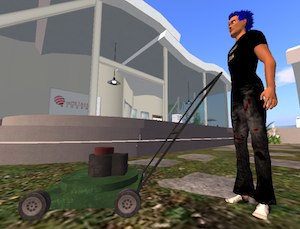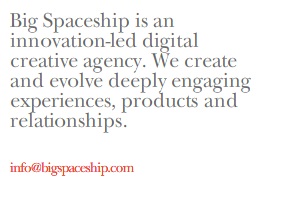 Although it’s mostly a throwback to the mid to late 20th Century, there’s still a significant cohort of Australians who associate mowing the lawn with the ‘Aussie lifestyle’ (I hate generalisations, but bear with me). There’s no shortage of people who still dream of owning their own land, on which they can inflict the weekly spring and summer routine of mowing the lawn. Last weekend I had the opportunity to do some lawn mowing, and it occurred to me that for widepsread adoption of virtual environments to occur, the in-world experience needs to be a lot more like mowing the lawn. Keep reading to see a metaphor beaten within an inch of its life.
Although it’s mostly a throwback to the mid to late 20th Century, there’s still a significant cohort of Australians who associate mowing the lawn with the ‘Aussie lifestyle’ (I hate generalisations, but bear with me). There’s no shortage of people who still dream of owning their own land, on which they can inflict the weekly spring and summer routine of mowing the lawn. Last weekend I had the opportunity to do some lawn mowing, and it occurred to me that for widepsread adoption of virtual environments to occur, the in-world experience needs to be a lot more like mowing the lawn. Keep reading to see a metaphor beaten within an inch of its life.
Experience
Lawn mowing, like any experience, is for most people a combination of sensory input that creates a memory. For the person cutting the grass, it’s everything from the smell of the mower fuel, the noise of the mower, the physicality of starting it up and pushing it, the visuals of the enviroment you’re partially decimating and finally the odour of cut grass.
It’s no surprise there’s heavy research into the development of interfaces that integrate the senses as part of the virtual world experience – it may not be a must-have for effective interaction but it will ensure it gets as real as possible for those wanting the richest in-world experiences. The day I can smell petrol fumes as an avatar is when I know the revolution has occurred. Whether that’s a good thing is another lengthy argument.
Achievement
Ask any devoted mower of lawns and they’ll confirm one of the big rewards for their activity is seeing the chaos of long grass turned into a controlled, neat expanse. Yes, it’s a maddening perspective for a lot of people and there’s a lot of fence-sitters (like me) who enjoy seeing the neat results but like the unruly option as well. What underlies the mowing fetish is the sense of achievement of physically pushing a machine around that makes a difference to the look of your abode (and no, I will not divert to vaccuum cleaner metaphors as well). Gaming worlds have had this nailed down beautifully for years, and I can vouch for the fact World of Warcraft have polished that nail to a dazzling sheen. Social-oriented worlds like Metaplace and Farmville also have some pretty well fleshed out achievement systems. This is one aspect where the lawn mowing analogy comes into its own: we’re quite happy to push or ride the mower around the same circuit week after week, year after year if there’s a reward. Ring a bell, MMO grinders?
Ownership
Unless I have no choice, I don’t want someone else mowing my lawn. Sure, I’m happy to do someone else’s if they need me to, but it’s my lawn I’m passionate about and I want everyone to respect that and to also enjoy their green patch in their own way.
Virtual environments are struggling to come to grips with how best to achieve harmony with content ownership – you only need to look at this week’s Burning Life content theft issue in Second Life to see the ongoing challenges. There are still a lot of individuals quite happy to bring their plough over univited and rip a large channel through your prize turf. Part of the answer is governance and law enforcement, but the larger challenge is inculcating an acceptance of content ownership and rights across the entire virtual worlds sphere. Sure, the majority of us have that respect, but I’d wager there’s more plough-toting avatars than real-world equivalents.
Usability
If you’re lucky enough to own a lawn mower manufactured in the last 10 years or so, you’ll know how well they work now. Startup tends to be a breeze, they’re lighter to push around, emptying the catcher is easier and the days of choking on exhaust fumes are pretty much over. Most virtual environments are better than a 1954 Victa but most are still essentially 1988 models. They work fairly well but are heavy on the resources and make for a frustrating experience if used for long periods of time. To flog the analogy to death, there are still people who collect or even use old mowers, and the same applies to virtual worlds. Niches are good but the better model is always going to attract the bigger support.
The Last Word
If you’ve read this far, you’ve probably had enough of the lawn mowing analaogy. But whether it’s that or another human experience like first love, the smell of freshly baked bread or the birth of a child, the point remains the same. We all want a lot more out of virtual environments and we’re likely to get it eventually. The trouble is, by that time I may be old enough that I’m yelling at kids to get off my lawn.

Recent Comments